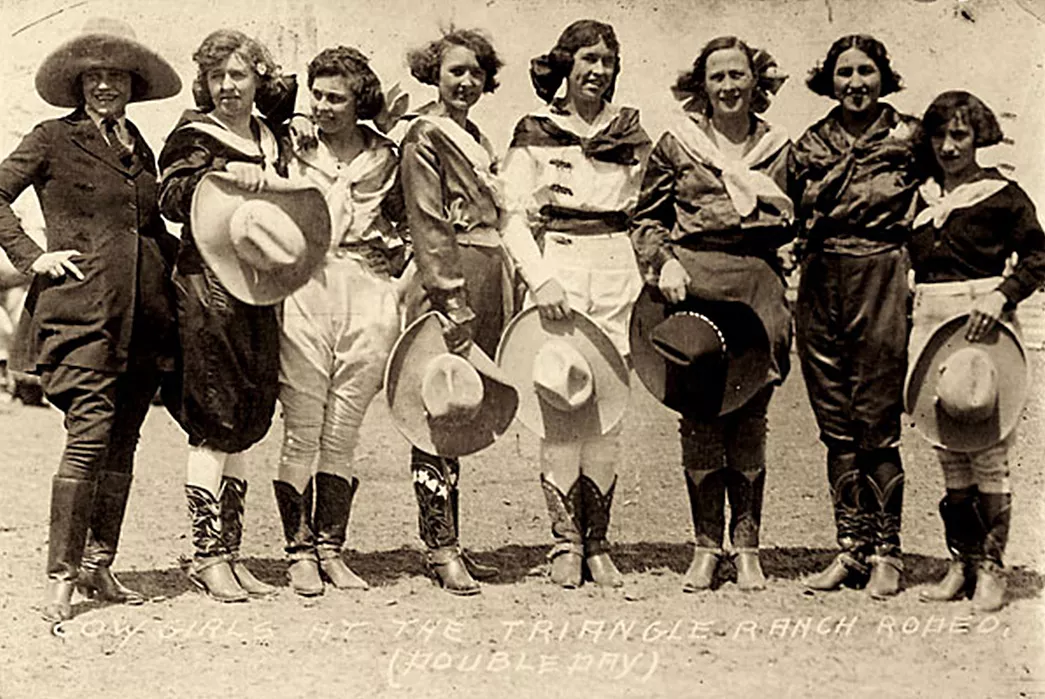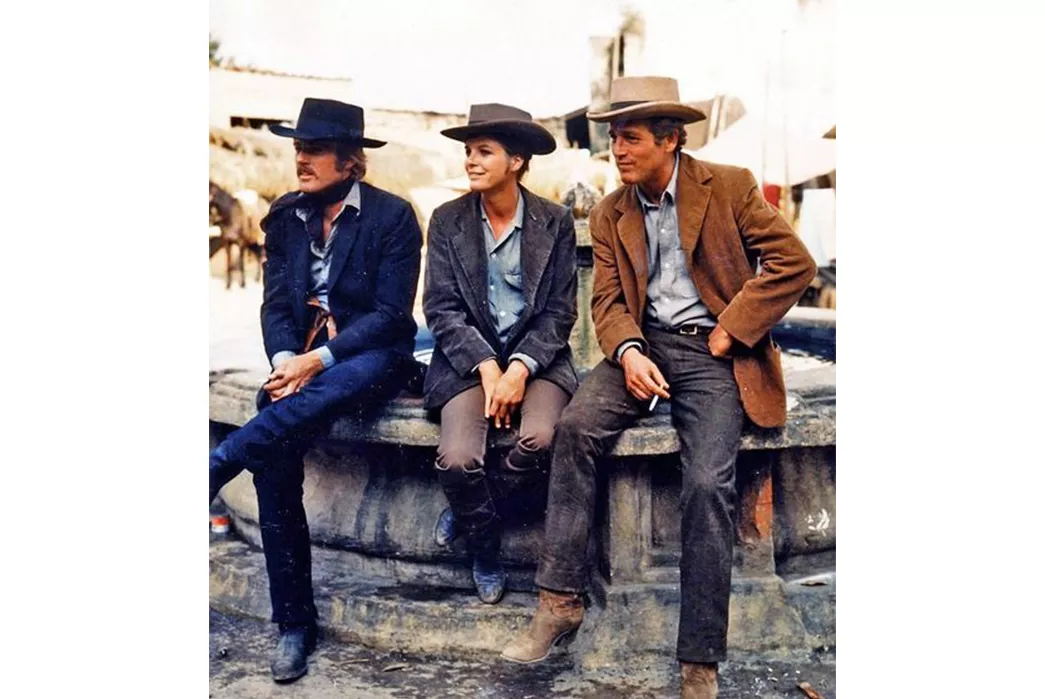
Cowboy boots have a rich and fascinating history dating back to the mid-1800s in North America. Originally designed to be worn by cowboys and ranchers for their practicality and durability, cowboy boots have since become a staple of Western fashion and culture.
Cowboy boots refer to a specific style of riding boots historically worn by cowboys. They have a Cuban heel rounded to a pointed toe, a high shaft, and, traditionally, no lacing. cowboy boots are normally made from cowhide leather but are also sometimes made from "exotic" skins such as crocodile, alligator, snake, lizard, buffalo and the like.
Riding boots have been a part of equestrian life for centuries. Until the industrial age, boots were individually handmade in many different styles, depending on the culture. Early cowboy boot designs, along with other cowboy accoutrements, were also heavily influenced by the vaquero tradition imported from Spain to the Americas, dating back to the early 16th century. Military boots designed for cavalry riders also had an influence.Later, the industrial revolution allowed some styles of boots to be mass-produced. One mass-produced boot style, the Wellington boot, (a shorter but cavalry-oriented boot) was popular with cowboys in the USA until the 1860s.
Early boots were cowhide leather pieced together with single rows of top stitching, but as custom boots were made, cowboys asked for decorative stitching, cutouts in the high tops (early on, often Texas stars), and different materials. The interaction of wild west shows and, later, western movies influenced styles that working cowboys at times adopted. Modern cowboy boots are available in all colours and can be made from just about every animal whose skin can be made into leather, including exotic materials such as alligator and ostrich. One accessory used with cowboy boots is spurred, which is sometimes attached to the heel of each boot to cue a horse while riding.
The first cowboy boots were likely made by shoemakers who adapted traditional European riding boots to better suit the needs of cowboys. These early boots featured tall shafts to protect the legs from brush and thorns pointed toes for easy stirrup access, and high heels for stability while riding.
During the cattle drive era of 1866–1884, the cowboy was not apt to ruin a good pair of dress boots while working, but some owned more decorative dress boots to wear in town. The basic style elements permeated even working boots and made the Wellington obsolete. Fashion magazines from 1850 and 1860 show the cowboy boot with topstitching, cutouts of geometric or other natural elements and underslung heels. The American-style boot was taken up by boot makers in the cattle ranching areas of Texas, Oklahoma, and Kansas.
When mounting and, especially, dismounting, the slick, treadless leather sole of the boot allowed easy insertion and removal of the foot into the stirrup of the Western saddle. The original toe was rounded and a bit narrowed at the toe to make it easier to insert. While an extremely pointed toe is a modern stylization appearing in the 1940s, it adds no practical benefit and can be uncomfortable in a working boot.
While in the saddle, the tall heel minimized the risk of the foot sliding forward through the stirrup, which could be life-threatening if it happened and the rider was to be unseated. There was often a considerable risk that a cowboy would fall from a horse, both because he often had to ride young, unpredictable horses, but also because he had to do challenging ranch work in difficult terrain, which often meant that he could accidentally become unseated by a quick-moving horse. If a rider fell from a horse but got a boot caught in the stirrup, there arose a very great risk that the horse could panic and run off, dragging the cowboy, causing severe injury and possible death.
The tall leather shaft of the boot helped to hold the boot in place in the absence of lacing. The tall shaft, comfortably loose fit, and lack of lacing all were additional features that helped prevent a cowboy from being dragged since his body weight could pull his foot out of the boot if he fell off while the boot remained stuck in the stirrup. While mounted, the shaft also protected the lower leg and ankle from rubbing on the stirrup leathers, as well as fending off brush and thorns, particularly if also worn with chaps or chinks. While dismounted, the shaft helped protect the leg and foot from rocks, brushes, thorns, and rattlesnakes. In wet weather or creek crossings, the high tops helped prevent the boot from filling with mud and water.
The modern roper-style boot with a low heel and shorter shaft emerged from the traditional design in response to the needs of modern rodeo, particularly calf roping, where the cowboy had to run to tie the calf as well as to ride. The lower shaft resulted in a less expensive boot, but also allowed the boot to be more easily removed. A lace-up design for roper boots became popular as it prevented the boot from falling off too easily and provided more ankle support when on foot, though the lacer also has safety issues because it will not fall off if a rider is hung up in a stirrup, and, lacking a smooth upper, the lacings themselves may make it easier for the boot to become caught in the stirrup in the first place.
There are two basic styles of cowboy boots, western (or classic), and roper. The classic style is distinguished by a tall boot shaft, going to at least mid-calf, with an angled "cowboy" heel, usually over one inch high. A slightly lower, still angled, "walking" heel is also common. Although Western boots can be customized with a wide variety of toe shapes, the classic design is a narrow, usually pointed, toe.
As the popularity of cowboys and ranching spread throughout the American West, so too did the popularity of cowboy boots. They became a symbol of the rugged and independent spirit of the American frontier and were worn not just by cowboys, but by anyone who wanted to embody that spirit.
Over time, cowboy boots evolved in style and design. Different regions of the West developed their unique styles of boots, such as the pointed-toe boots popular in Texas, and the rounded-toe boots favoured in California. Decorative stitching, intricate leather tooling, and exotic materials like snakeskin and alligator became common features of cowboy boots.
As the popularity of cowboys and ranching spread throughout the American West, so too did the popularity of cowboy boots. They became a symbol of the rugged and independent spirit of the American frontier and were worn not just by cowboys, but by anyone who wanted to embody that spirit.
Over time, cowboy boots evolved in style and design. Different regions of the West developed their unique styles of boots, such as the pointed-toe boots popular in Texas, and the rounded-toe boots favoured in California. Decorative stitching, intricate leather tooling, and exotic materials like snakeskin and alligator became common features of cowboy boots.
Today, cowboy boots remain a popular fashion item, worn by people all over the world as a way to express their individuality and connection to Western culture. From rodeo stars to rock stars, cowboy boots continue to be a beloved and enduring symbol of the American West.
Cowboy Boot Store has an excellent range of men's, women's and children's (of all ages) cowboy boots! You're sure to find something you like and we are here to help with finding the right pair for you! On every product page, you can find a size chart to convert your size to the different brands' sizing and in the product description you can find calf measurements, heel measurements and more details about the boots. If there's information you can't find or want more in-life photos and measurements of your specific size just email your questions to cowboybootstore@gmail.com








-1130x300h.png)























